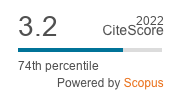Article | Open Access
Zero-Car Households: Urban, Single, and Low-Income?
| Views: | 2269 | | | Downloads: | 600 |
Abstract: This article unravels, by employing two binary logistic regressions, the socio-economic profiles of zero-car households in Flanders (Belgium) and sheds light on their residential environment. The employed dataset contains information regarding the socio-economic status and car ownership of all individuals with a home address in Flanders. Furthermore, the study explores the proportion and size of voluntarily car-free and car-less households due to constraints within the Flemish population. It does so by classifying zero-car households based on a spatial typology and the income decile these households belong to. Results indicate that zero-car households are overrepresented at the bottom of the income distribution and are overwhelmingly single. Children’s presence contributes to the likeliness that a household owns a car. The spatial typology (urbanised, suburban, or rural) and the presence of public transport are minor but remain significant contributors. The main contribution of this article is that it highlights that despite the evidence that zero-car households are strongly present in urban areas, the share of zero-car households living in remote areas may not be underestimated. For the total population in Flanders, 5.47% of households may face problems due to their residential location and lack of a car, which comes on top of dealing with modest or low household budgets. Almost 37% of the zero-car population lives in an urbanised area and has a low income. This corresponds with 8.4% of the Flemish population. This group likely experiences a latent demand for car ownership. The households we can confidently identify as car-free, deliberately and voluntarily living without a car, are a minority group and account for approximately 5% of the Flemish population. The article concludes with the notion that involuntarily carlessness can be considered a proxy for vulnerability. However, urban planning centred around proximity, accompanied by housing policy that benefits low-income groups, can act as a buffer against transport vulnerability.
Keywords: car ownership; Flanders; urban planning; zero-car households
Published:
© Eva Van Eenoo. This is an open access article distributed under the terms of the Creative Commons Attribution 4.0 license (http://creativecommons.org/licenses/by/4.0), which permits any use, distribution, and reproduction of the work without further permission provided the original author(s) and source are credited.




